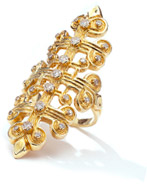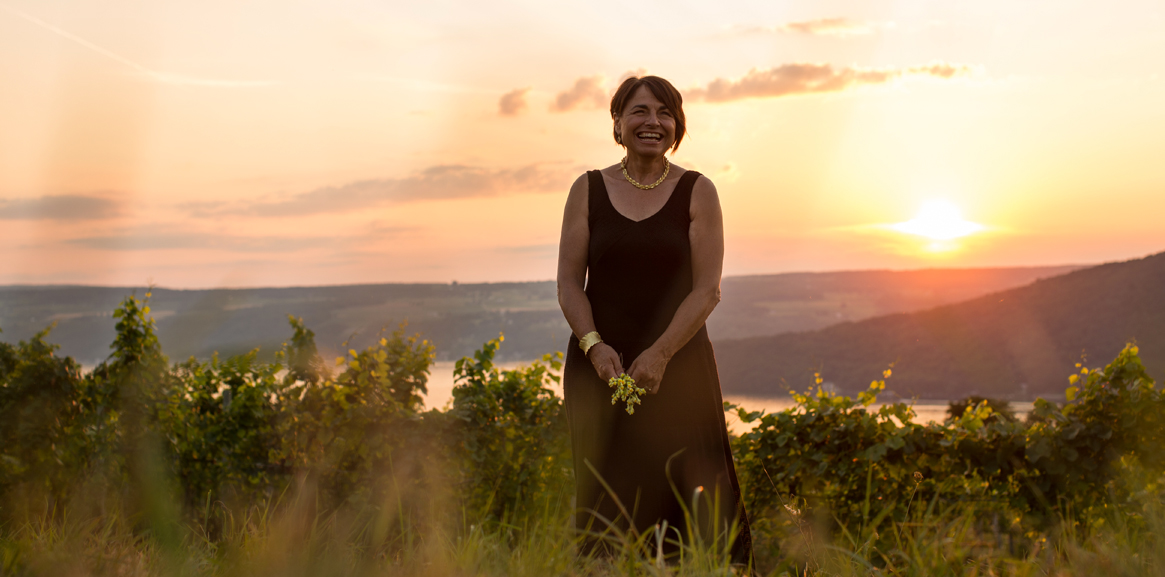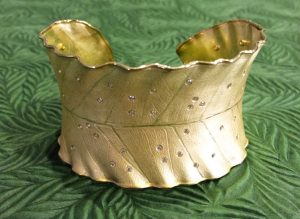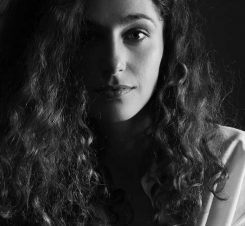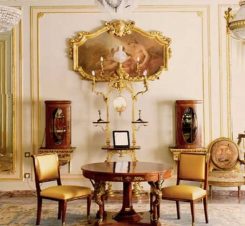Journal.
A Vineyard Visit with Barbara Heinrich
July 12th, 2016 | by Cheryl Kremkow|Barbara Heinrich, In-Depth, InterviewMemo travelled with goldsmith Barbara Heinrich to a vineyard in New York’s Finger Lakes, where she has a cottage on the shore, to talk jewelry, wine, family, and breaking the rules.
Gold flows with a subtle grace, effortlessly gathering all the light in the room into the soft gleam on its intricately worked surfaces. A classically trained goldsmith from Germany who is now one of the leading figures in American jewelry design, Barbara Heinrich creates jewelry that is timeless yet as individual as a fingerprint. Her work is fabricated by hand, one piece at a time, with signature textures created with tools she makes herself.
Memo travelled with her to a vineyard in New York’s Finger Lakes, where she has a cottage on the shore, to talk jewelry, wine, family, and breaking the rules.
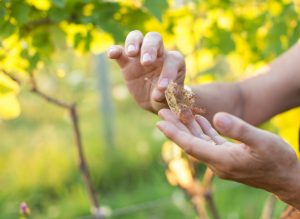
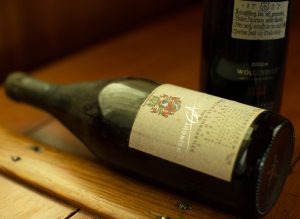
Tell us about your family. Where did you grow up?
I grew up in a vineyard in Europe my family has owned since 1545. You don’t even have to water the grapes because their roots go down 60 or 70 feet. We have deep roots.
We have a large family and everybody is allowed to have their own opinion and there are long discussions and usually a lot of wine. We laugh a lot. That’s what family means to me. You know they say that families that play together stay together.
Even though winemakers like my family are not nobility at all, they are laborers, really, and you work really hard in the vineyard, there’s strength to it too. You work in the vineyard and you create wine and you connect people. Wine is really about connecting people.
Family comes also with obligation. And I was fortunate that I did not have to take over the winery, my brother did that. So I had the freedom to do my own thing and felt supported all the way through.
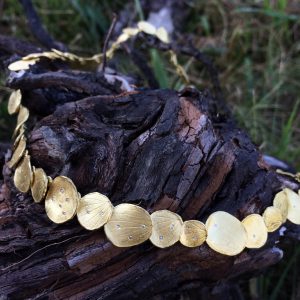
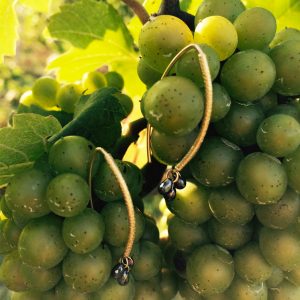
Jewelry has deep roots, too, doesn’t it?
A few years ago I went to the Hermitage in St Petersburg to see the Scythian jewelry collection and I was completely blown away by this 4000-year-old jewelry and the beauty. There is power in gold. It’s not because of what it’s worth. Gold is a noble metal. It doesn’t oxidize, it doesn’t deteriorate, it doesn’t react with anything. That’s why I’m drawn to it.
When did you start making jewelry?
When I was a child I had a whole series of apple seed jewelry that I sewed together. My mother was gracious enough to wear everything. Maybe she took it off when she left the house but I never knew! Then when I was a teenager I started making jewelry out of silver wire and glass beads and even learned how to make glass beads. I had a little business. It was just totally natural. I’m a collector. You know there are hunters and there are gatherers. I’m a gatherer and I always gathered pretty things. Anything I could pierce or connect somehow I turned into jewelry. So I really think I was just born with it.
And you went to school to study jewelry too.
When it came time to go to college, I was going to go into another field and my dad said ‘why don’t you study jewelry design?’ And I said, ‘it’s too easy. I’m already doing it.’ But he encouraged it. It was the right thing for me to do. I became a jeweler and goldsmith first. I did formal study in jewelry making then formal study in design, then a master’s in design. I have the advantage in basically knowing how to make anything. The nine years of training helps, especially getting past the hurdle of the rigidity of the metal. You really have to start playing with the metal.

What was it like when you first came to America?
I had a scholarship to study at Rochester Institute of Technology. I arrived in America with my tools in a red backpack. And it got lost at JFK. I missed my connecting flight. I hung out at JFK until I found them. I wasn’t going anywhere without my tools.
It was a culture shock. At first, I was miserable because I didn’t feel that what I was doing had any value here because it was a different culture.
Jewelry is cultural expression. It helped me see how other cultures express thoughts in jewelry and then the interaction of that with my culture and this culture. I find this jewelry that I make is very much a product of both cultures.
What do you think about your work is American and what is European?
In Germany, I learned aesthetics and how to think about jewelry and how to analyze a piece. It’s very analytical and a lot of the jewelry is very intellectual.
The American part is more the intuitive: to not be afraid to bring in everything about yourself into the jewelry. So the jewelry has personality in it. It speaks and it’s alive. In Germany we were taught to keep yourself out of the jewelry. And here you put yourself into the work. I always say, if you put yourself into the work, it will be unique. Because we’re all unique. Have the courage to be yourself and find a visual expression for that.
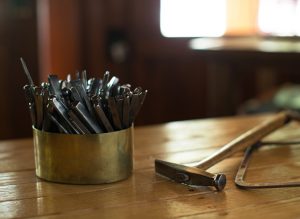
How has jewelry changed since you came to America?
There wasn’t really artist’s jewelry. There was only traditional jewelry, mainstream factory-made jewelry. It was the beginning of jewelry made by artists, jewelry handmade by artists in their studios, studio jewelry. It’s been very exciting to be part of that movement. I just worked on the exhibition of 25 years of American jewelry design through the American Jewelry Design Council, I’m the president right now, and I have been here for all of those 25 years, which is pretty fascinating. It’s an interesting time in the history of jewelry.
What is it like when you see someone wearing your jewelry?
Mostly I love hearing the stories. When people say, “oh, I’ve worn this necklace for 20 years every day. I don’t take it off or it has become part of me.” I love that about jewelry, it’s so intimate, people wear it on their skin and they express themselves through the jewelry. Which is very special. We’re very close to the person with jewelry.
What’s your favorite piece?
I love the Leaf Cuff. It’s bold, but subtle. It’s strong and soft. I take a dried leaf and put it on top of a piece of gold that I prepare, it’s annealed and soft, I put it through the rolling mill, rolling it through it by hand, so that the texture of the leaf gets impressed into the gold. Each of these is hand made and unique, with its own leaf that gets rolled into the gold. That’s the great thing about gold. It’s malleable, it takes on an imprint, and yet it’s strong, you can’t bend it out of shape once we do the forming to give it structural shape. The hard part about this is I have to hammer it without destroying the leaf structure.
The leaf cuff is one of the first pieces I made where I feel the gold is completely fluid. It took me 20 years of experience as a goldsmith to get past the hardness and rigidity of gold and make it look like it flows. So it’s a very emotional piece for me. I sent a postcard of it to my dad. He called me up on the phone, he started crying and he said ‘All I can say is congratulations.’ He got it. He got it that it meant a breakthrough. I had resisted the idea of rolling a leaf into gold like this because in my German training, that was too literal. The artist has to interpret and not copy nature. So that was a monument saying you can’t do this! And I said, OK, I’m going to do this. I live in America I can do anything I want.
I also like how a cuff like this dresses you. You put on simple clothes, jeans, anything, and a good piece of jewelry and you’re together.
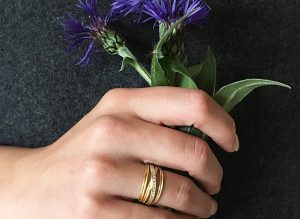
How has making jewelry changed you?
I have learned to be in the moment. I just did a show in Telluride and I met a customer and designed some rings for her. She sent a long email that the gallery forwarded to me. She said ‘Barbara was just there for us, like we were the most important people in her life. She was able to completely listen to what we wanted.’ The only way this is possible is if we’re in the moment. In the moment we connect. Often we’re caught up in the past or in the future or we’re somewhere else in between. But if we’re completely present, it’s actually very joyful, like we are right now. We’re in the moment together. And I think I learned that through jewelry making.
What’s your ideal vacation?
I hike a lot. This year I hiked in Switzerland and Patagonia. I like the rhythm of just walking. My most amazing hike was in Bhutan, we hiked through the mountains there. It was just beautiful, beautiful, beautiful. When I’m hiking I get lots of ideas. You are in nature and you see some moss or the color of some fern or a wrinkled up leaf. I see all of these forms and it’s infinite. I bring back lots of photos and they become sources of inspiration for new work. Sometimes I just stare at something and it’s a whole series of new work right there.
What inspires you most in life?
Family. Wine. Life. Having time and also realizing that time is an illusion, time is not real as Einstein proved. What is time, if it’s not real, how do we use it? We better enjoy what we are doing. To me, that’s the point, you know? Let’s use it well, let’s have fun and be joyful about it. Joy runs in our family. It’s not something that I make or I do, it just is. It’s a gift.
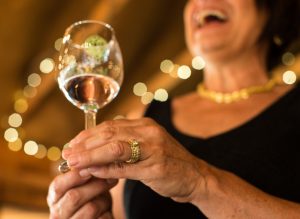
Does jewelry have a spiritual side?
I really believe that beauty speaks to everyone. I used to design in college very cutting edge jewelry. It wasn’t beautiful. It was very interesting. It was published and recognized. I had to be willing to give that up to create things that have a more timeless beauty, which I feel my work has now. I feel there is something eternal in this work. If somebody digs up this cuff I’m wearing in 4000 years or finds it at the bottom of Conesus Lake, like my husband’s two wedding rings that are down there, they will say, “Oh! This is beautiful.’ I think that’s the connection. The form language is beauty. That’s how we capture that spiritual part in jewelry.
Gold has such nobility. And the metaphor for me is that we also have that inside. And that’s why I think gold stabilizes something inside us, our spiritual self. The nobility of gold connects with the nobility of our divine being within that every person has. I’ve made jewelry in every material but once I started creating in gold I arrived. That’s what I wanted to do. When I wear gold, it strengthens me. Gold connects us to source: that’s why I’m so passionate about it.
